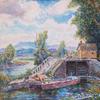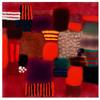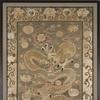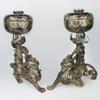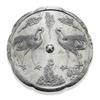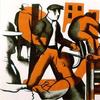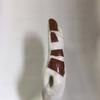Winslow Homer Exhibition Examines the Relationship of His Art to Photography
- CHADDS FORD, Pennsylvania
- /
- September 25, 2018
This fall the Brandywine River Museum of Art, in Chadds Ford, Penn., will present Winslow Homer: Photography and the Art of Painting, exploring the surprising role photography played in the evolving practice of one of America’s most iconic artists. On view November 17, 2018 through February 17, 2019, the exhibition will feature approximately 50 paintings, prints, watercolors and drawings from all major periods of the artist’s career, as well as a comparable number of photographs collected by Homer.
Winslow Homer: Photography and the Art of Painting examines the role the relatively new medium of photography played in the evolving practice of one of America’s most iconic artists. The exhibition presents a full picture of the artist’s working methods and includes noteworthy archival objects, such as two wooden dolls used as models, his palette and two of the three cameras he owned.
As a young artist for Harper’s Weekly during the Civil War, Homer utilized photographs as source material for some of his drawings, including Alexander Gardner’s famous photograph of Lincoln’s first inauguration—which provided Homer with the pictorial information he needed to construct his own detailed view of the event. This exhibition documents Homer’s post-Civil War travels to newly popular tourist destinations such as the White Mountains of New Hampshire, the Catskills and Adirondacks of New York, and Cape Ann in Massachusetts. In his travels he was introduced to a new type of photography—commercially produced views to promote tourism. These photographs captured a moment in time and effects like glare, blur and shadow that the eye might not perceive. Homer quickly understood that photography could provide fresh, immediate perspectives that he could incorporate into his paintings.
During the last three decades of his life, Homer often created compositions of the same subject in different mediums including painting, printmaking and photography. His use of various media came from his interest in probing the way things look and the challenge of portraying them realistically. Homer often borrowed certain elements—the cropping, the blur of the background and the flatness of the composition—from photographic convention, yet his painting, based on unique optical experiences, was an artistic creation reflective of myriad decisions. To Homer, paintings had the potential to make a subject more clearly understood; photography added to that conversation about how to portray the world around him.
Organized by the Bowdoin College Museum of Art (BCMA), Winslow Homer: Photography and the Art of Painting is curated by Frank H. Goodyear, BCMA co-director, and Dana E. Byrd, Bowdoin College Assistant Professor of Art History. The exhibition features a rich selection of work drawn from the BCMA’s incomparable holdings of Homer’s art and archival materials, and from more than 20 major institutions, including the Addison Gallery of American Art, the Cooper Hewitt National Design Museum, the New Britain Museum of American Art, the Portland Museum of Art, and the Wadsworth Atheneum.
“Homer gave visual form to the American experience in the second half of the 19th century and has been highly influential to generations of artists, including many of those in the Brandywine’s collection,” said Thomas Padon, director of the Brandywine River Museum of Art. “Because of this, Winslow Homer: Photography and the Art of Painting will have particular resonance here, and we are thrilled to be the second and only other destination for this remarkable exhibition.”
An illustrated catalogue authored by Goodyear and Byrd and published by Yale University Press accompanies the exhibition. The catalogue serves as a significant contribution to the study of Winslow Homer and the cross-disciplinary study of painters and photography in American art.


